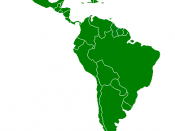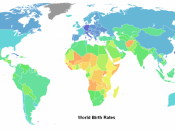Since the 1970s, Venezuela has gone from being South America's richest nation into a nouveau-poor society in search of an identity. Once known as the Saudis of the West, Venezuelans have seen their economic fortunes decline in exact proportion to the general fall in world oil prices. Even so, Venezuela's many problems were hidden from view until relatively recently, when severity measures heralded the sort of economic crises so painfully familiar to other Latin American countries. Runaway inflation, currency devaluations and even food riots have marked this new phase in Venezuelan history, to which the country is still trying to adjust.
The projected population for 2010 is estimated at approximately 28,809 million, with a birth rate of 29.9 per thousand and a low mortality rate of 4.7 per thousand. Today the estimated population is 23,542,649 with a growth rate of 1.6%. Caracas, the capital, and the state of Miranda, which are the areas with the greatest commercial and financial activity, have a population of 7.7
million people. The industrial and agricultural centers, which are the states of Aragua, Carabobo, and Lara, have a population total of about 5 million people. The state of Zulia, which is the major cattle rising and oil producing state, has a population of over 3 million people. Guyana, which is in the state of Bolivar, has the most important mineral reserves, has a population of 1,300,000. The mortality rate is at 26.17 per thousand and a birth rate of 21.09 per thousand. In spite of its growth, there is still a low population density. With only nine inhabitants per square kilometer, Venezuela is one of the least densely populated countries in the Western Hemisphere. The Venezuelan population is very young. About 70% is under the age of 40. 33% of...


